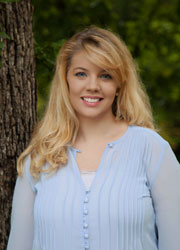The clock strikes midnight on January 1st, and another year has begun. For most people, the lyrics to the song “Auld Lang Syne” are some of the first words heard or spoken in the new year. This famous song signifies the ending of the old year and the importance of friendship. The title words translate to “for old times’ sake.” While many people know its classic lyrics, the history of this Scottish tune is known only by a few.
“Auld Lang Syne” was first written as a poem by Scottish Poet Robert Burns in 1788. The poem’s words, and now lyrics, describe the tale of old friends having a drink and reflecting on times long ago. Burns used another Scottish folk song and, as Burns once said himself, “the words of an old man” as inspiration. Many notice the similarities between “Auld Lang Syne” and the Scottish ballad “Old Long Syne” which was printed in 1711 by James Watson.
Even though it was written in 1788, the poem wasn’t published and made public until Burns’ death in 1796, when it first appeared in James Johnson’s Scots Musical Museum. In 1799, the words were put to music. Various versions of the same tune of “Auld Lang Syne” were used in English Composer William Shield’s opera, Rosina, in 1782 and Johnson’s volume four of the Scots Musical Museum in 1792. George Thomson created the version we know today seven years later.
“Auld Lang Syne” has been reproduced throughout the world. In 1877, Alexander Graham Bell aired the tune to show how the telephone worked, and in 1890, “Auld Lang Syne” was one of the first songs recorded by Emil Berliner on the gramophone. Lastly, the song gained more notoriety when it was sung at the end of the World Scout Jamboree in 1920. After this event, France, Germany, Greece and Poland created their own version. However, it wasn’t until 1929, that the tune became associated with the new year. During the Times Square celebrations that year, lyrics were shown on the electronic ticker, and the rest is history. Since then, the tune has appeared in TV shows and movies, famously closing the story of It’s a Wonderful Life in 1946.
When it comes to New Year’s, “Auld Lang Syne” has been added to many different celebrations and ceremonies. Each event has a specific tradition of their own for the song. One particular event is the Scottish Hogmanay New Year’s celebration. This town has a special tradition that dates back to the mid-19th century and the practices of the Freemasons. In Hogmanay, Scotland, participants stand in a circle holding hands while singing the classic lyrics. Then, when the last verse begins, everyone crosses their arms over their chest and reaches out their hands to their neighbors. Once the song is done, the participants rush to the middle of the circle, still holding hands, and then pull the circle back out. Lastly, they turn under their arms to face outwards with hands still together. The circle and holding of hands tradition appears in other areas throughout the world. Queen Elizabeth II followed the practice at the Millennium Dome celebrations for the 2000 new year.
The song isn’t only used to ring in the new year. It has also been heard at funerals, parties and other parting events. In Japan, their song, “Hotaru no hikari” was played at graduations and is still used to close shops at the end of the day.
However, the song may be used, its lyrics and tune binds people throughout the world. It is a song of friendship, of old times, and coming back together.
As the characters Harry and Sally once exchanged in the movie When Harry Met Sally:
Harry: “What does this song mean?”…I mean ‘should old acquaintances be forgot?’ Does that mean that we should forget old acquaintances, or does it mean if we happened to forget them, we should remember them…?”
Sally: “Well, maybe it just means that we should remember that we forgot them or something. Anyway, it’s about old friends.”
Let’s just say, the words to “Auld Lang Syne” will always be heard throughout the world on January 1st. “For auld lang syne, my dear.”



















